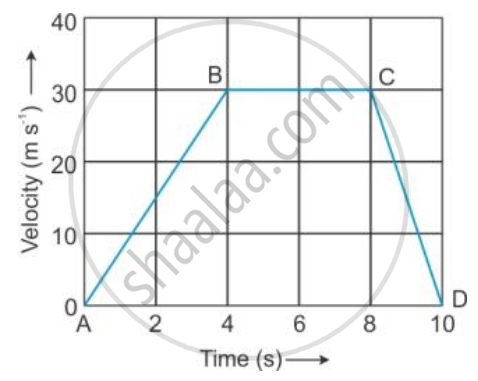Advertisements
Advertisements
प्रश्न
An aircraft travelling at 600 km/h accelerates steadily at 10 km/h per second. Taking the speed of sound as 1100 km/h at the aircraft’s altitude, how long will it take to reach the ‘sound barrier’ ?
उत्तर
Final velocity, v = 1100 km/h = 1100 × 5/18 = 305.55 m/s
Initial velocity, u = 600 km/h = 600 × 5/18 = 166.66 m/s
Acceleration = 10 km/h per second = 10 × 5/18 = 2.77 m/s2
Time taken by body,
v = u + at
t = (v - u)/a
t = (305.55 -166.66 )/2.77
t = 50.14 sec
t ≃ 50 sec
APPEARS IN
संबंधित प्रश्न
Fill in the following blank with suitable word:
The physical quantity which gives both, the speed and direction of motion of a body is called its……………
Bus X travels a distance of 360 km in 5 hours whereas bus Y travels a distance of 476 km in 7 hours. Which
bus travels faster ?
The speed of a moving object is determined to be 0.06 m/s. This speed is equal to :
Which of the following statement is correct regarding velocity and speed of a moving body?
Arrange the following speeds in increasing order.
10 m s-1, 1 km min-1 and 18 km h-1.
For the motion with uniform velocity , how is the distance travelled related to the time ?
Figure shows the displacement of a body at different times .
Calculate the velocity of the body as it moves for time interval :
(i) 0 to 5 s,
(ii) 5 s to 7 s
(iii) 7 s to 9 s.

From the displacement-time graph of a cyclist given below in the Figure, find The average velocity in the first 4 s.

The velocity-time graph of a moving body is given below in Figure

The acceleration in parts AB, BC and CD.
How many variables are present in each equation of motion?
